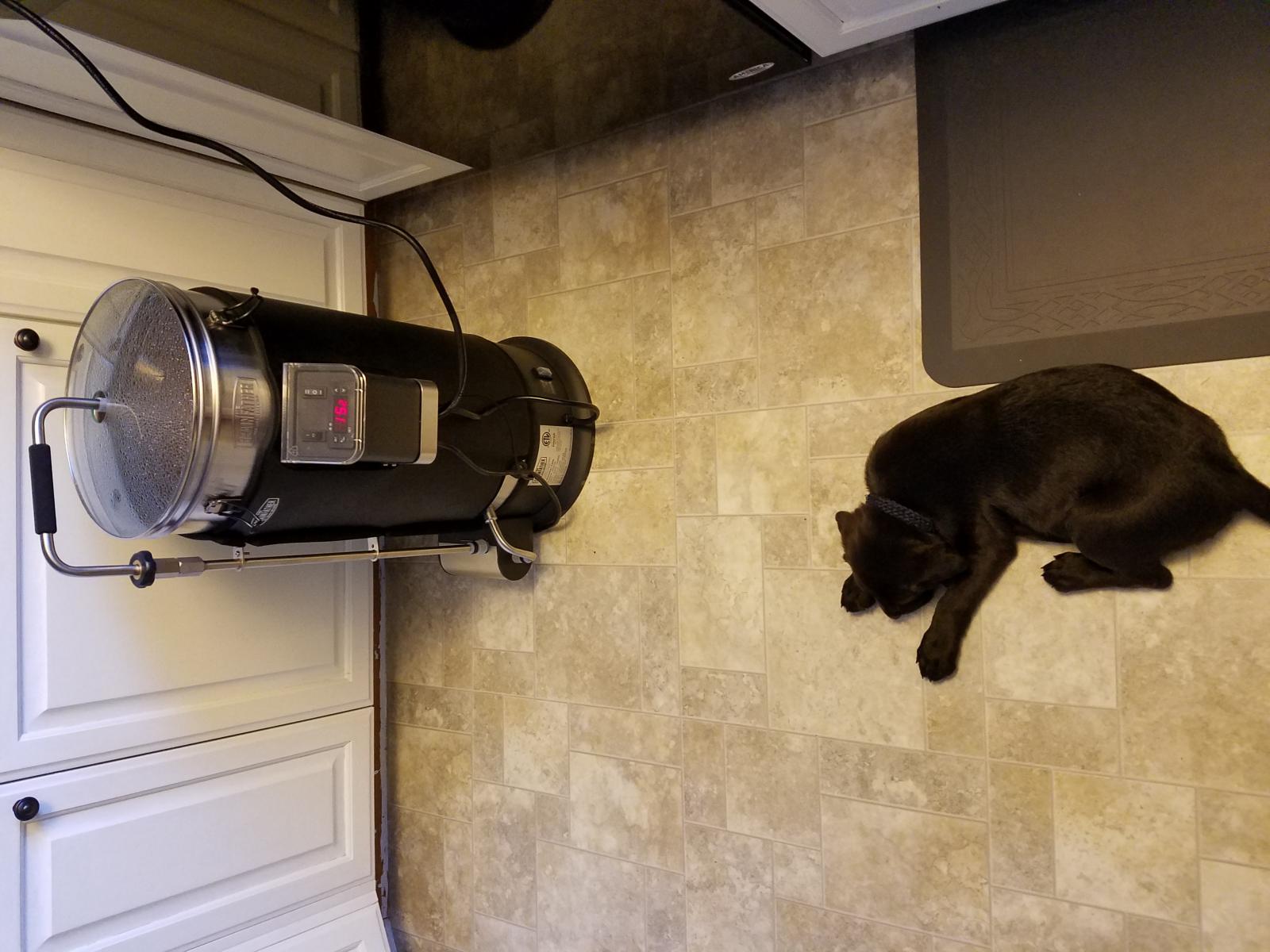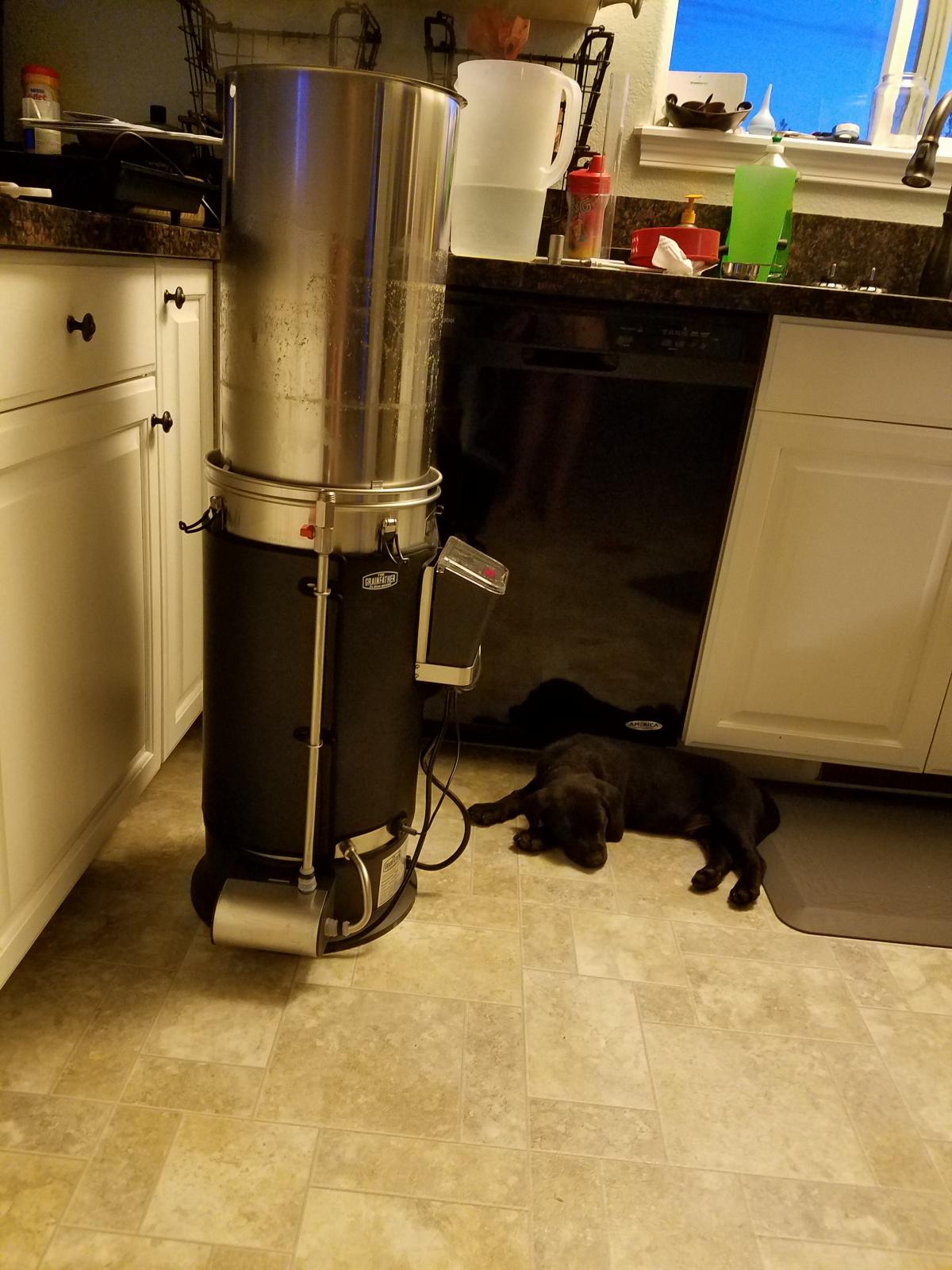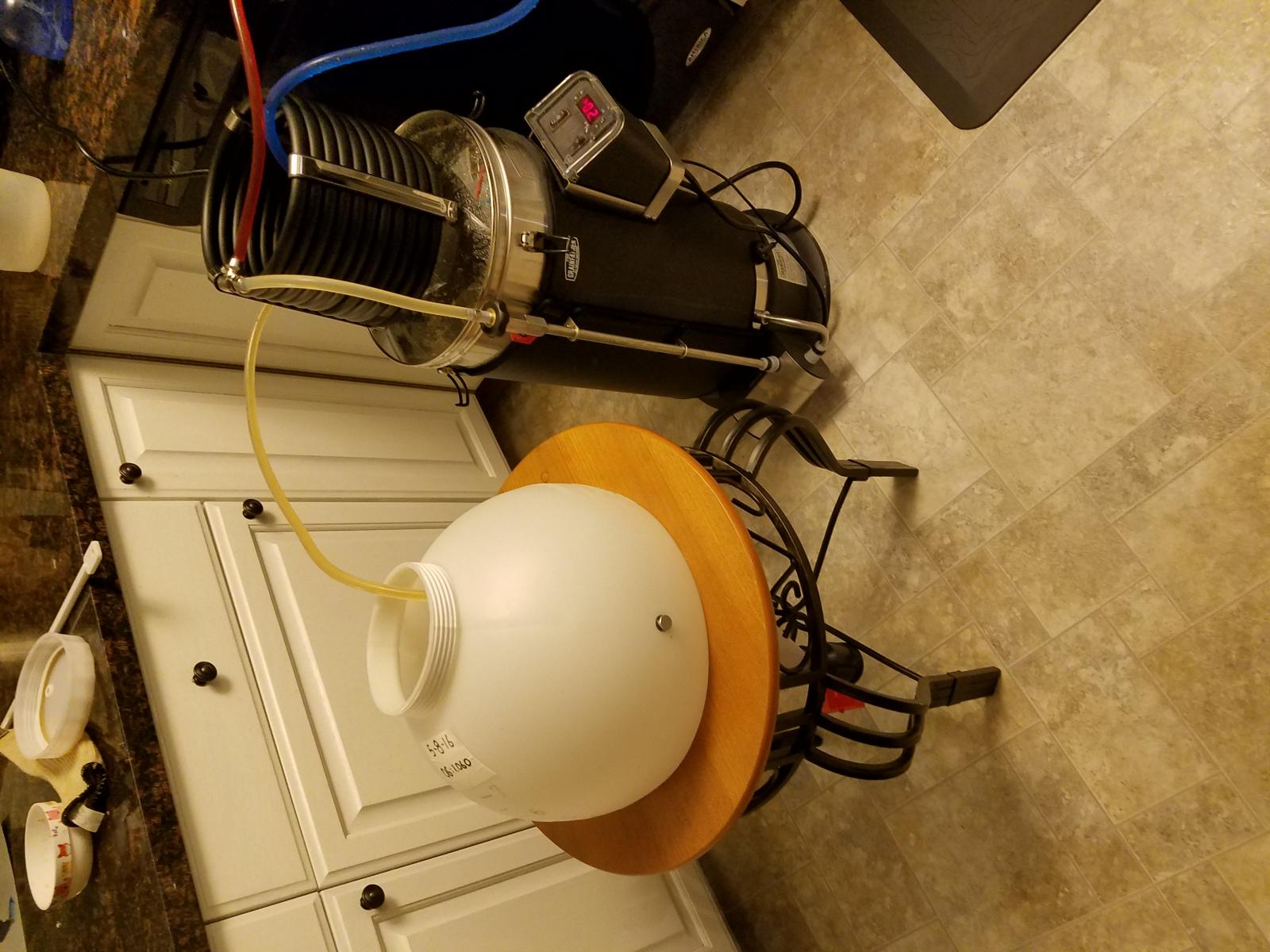Well, I did my very first brew with my Grainfather today..Things went rather well for the most part then all went to hell quickly at the end of the boil...I did Piney The Welder kit, clone of a beer from some west coast brewery that sounds very similar to it..
I did do one thing differently this brew, and won't do this again in the future..I had this really brilliant idea(not in hindsight) that I would put my grains in the basket and then rest the basket above the water as it warmed to mash in temperature, on the belief that doing this would warm the basket and grain and the water temperature wouldn't drop drastically when added..Well, that was true, what I didn't take into account for was that the only holes were on the bottom so the basket wanted to float until I pushed it down..Not good..Pushed the center rod 'thingy' down into the grains- damn, fish out of hot water so all those grains don't get into the mash- some did..Dang..Go on with mash..Unit kept the temperature pretty rock solid right at 152..Good..Okay, mash out, bump up to 170 for 10 and then lift basket and start sparge..Goes pretty good..Get done with sparge and now time for boil..I switched unit to boil mode while I was sparging so water was up to like 190 when I was done with the sparge..
Boil went well..As you can see in picture 1 I was able to achieve a pretty vigorous rolling boil- inside an air conditioned house at almost sea level..Cover on control panel prevents the numbers from being seen but the temp was at 213 when this pic was taken..Boil went splendid, never a threat of a boil over- which made me happy!

The trouble began once I hooked up the CFC and began cooling the wort..As you can see in picture 2 I have brought the temp down to 119, and in pretty quick time..I DID get it down(according to the readout) to like 98 when things went haywire..Temp started going back up! WHAT?!?! I have the element OFF! Pull the tube up out of the wort and see I have ZERO flow..Sheesh, filter must be plugged up..Grab the plastic paddle, try to scrap at the filter assembly..No good..Gads..Unhook, unscrew check valve, and see it it is plugged at the spring with grain...Ok, remove spring and ball, re-assemble, turn on pump and still no flow..Now temp is back up to like 145!

Needless to say the **** hit the fan..Okay time for plan 'B'...Unplug everything get out my kettle..Drain wort from GF into kettle through my big strainer..OMG! There is a TON of grain in there..Sheesh..To shorten this novel, when I emptied out the grain basket, I found that the damn silicon gasket had some how slipped off at about a 3" section allowing all that grain freedom into the wort- also didn't help that at the very beginning of the mash I let a bit of grain into the wort as well..Had to put the wort in my kettle, then into a ice bath in the sink and then finally into the fermenter which went into the fridge for like 2 hours to get the wort to pitching temperature...Whew!..
Brew is currently in the closet and I am doing my best of RDWHAHB..Hopefully I will see airlock activity in the morning..
















![Craft A Brew - Safale S-04 Dry Yeast - Fermentis - English Ale Dry Yeast - For English and American Ales and Hard Apple Ciders - Ingredients for Home Brewing - Beer Making Supplies - [1 Pack]](https://m.media-amazon.com/images/I/41fVGNh6JfL._SL500_.jpg)



































 And still going when I got home tonight! So, I guess 1st 'dry hopping' will go as planned tomorrow then!
And still going when I got home tonight! So, I guess 1st 'dry hopping' will go as planned tomorrow then! 